Country guides

Things to do in Sri Lanka
Sri Lanka's tourist attractions reflect a long and captivating history, offering visitors a wealth of cultural and natural wonders to explore. The island is home to seven UNESCO World Heritage Sites, each one bearing witness to its rich and complex past. Among the most remarkable are the ancient cities of Anuradhapura and Polonnaruwa, the iconic rock fortress of Sigiriya, the cave temples of Dambulla, and the sacred ruins of Panduwasnuwara.
In the capital, the National Museum in Colombo is a worthwhile stop, housing a fascinating collection of artefacts that shed light on Sri Lanka's multi-layered heritage. This cultural complexity is also on full display in vibrant neighbourhoods such as Pettah Bazaar, where the streets come alive with exotic scents, bustling trade, and an authentic local energy.
For a more tranquil experience, visitors can head south to the charming seaside town of Galle, with its colonial architecture and relaxed pace, or travel inland to the serene lake city of Kandy, where ancient temples and historic landmarks offer a peaceful retreat.
Nature lovers and adventure seekers aren't left out either. The dramatic Yala National Park offers thrilling wildlife safaris, while the climbs up Sigiriya Rock or the sacred Adam's Peak reward hikers with breath-taking views and spiritual resonance.
And of course, no visit to Sri Lanka would be complete without time on its golden beaches, which stretch for hundreds of miles. Top coastal destinations include the quiet fishing village of Marawila on the northwest coast, the laid-back resort town of Negombo, and the beautiful Weligama Bay in the south, known for its sweeping curves and turquoise waters.
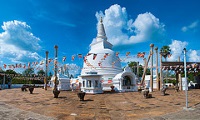
Anuradhapura
Anuradhapura, Sri Lanka's ancient capital, flourished from the 4th century BCE until 993 CE. Founded by King Pandukabhaya, it became a major Buddhist centre. The Jaya Sri Maha Bodh…
Anuradhapura
Anuradhapura, Sri Lanka's ancient capital, flourished from the 4th century BCE until 993 CE. Founded by King Pandukabhaya, it became a major Buddhist centre. The Jaya Sri Maha Bodhi, planted in 236 BCE from a sapling of the original Bodhi tree under which Buddha attained enlightenment, stands as the world's oldest documented tree. The city boasts monumental stupas such as Ruwanwelisaya and Jetavanaramaya, advanced irrigation systems, and sacred sites such as the Sri Maha Bodhi. Rediscovered in the 19th century, Anuradhapura remains a UNESCO World Heritage site and a vibrant pilgrimage destination.
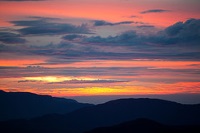
Adam's Peak
Rising 7,358 feet (2,243m), Adam's Peak (also known as Sri Pada) is one of Sri Lanka's most revered pilgrimage sites. At its summit lies a mysterious footprint-shaped impression, b…
Adam's Peak
Rising 7,358 feet (2,243m), Adam's Peak (also known as Sri Pada) is one of Sri Lanka's most revered pilgrimage sites. At its summit lies a mysterious footprint-shaped impression, believed by Buddhists to be Buddha's, by Hindus to be Shiva's, and by Christians and Muslims to be Adam's or St. Thomas's. The climb, via what's said to be the world's longest stairway, is especially popular at night to catch the stunning sunrise. At dawn, the mountain casts a perfect triangular shadow over the landscape. The panoramic views of jungle-covered peaks and the spiritual atmosphere make it a truly unforgettable experience.
Website www.sripada.org
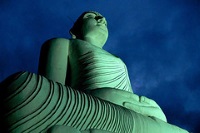
Kandy
Nestled in Sri Lanka's central highlands, Kandy is a serene city encircling a tranquil lake amidst lush hills. Once the capital of the Kandyan Kingdom, it resisted colonial rule fo…
Kandy
Nestled in Sri Lanka's central highlands, Kandy is a serene city encircling a tranquil lake amidst lush hills. Once the capital of the Kandyan Kingdom, it resisted colonial rule for centuries before falling to the British in 1815. Kandy is renowned for the Temple of the Sacred Tooth Relic (Sri Dalada Maligawa), which houses Buddha's tooth and is central to the annual Esala Perahera festival. This UNESCO-listed city also boasts the Royal Palace Complex, the verdant Udawattakele Forest Reserve, and the Royal Botanical Gardens in Peradeniya. Its cooler climate offers a refreshing escape from Sri Lanka's coastal heat.
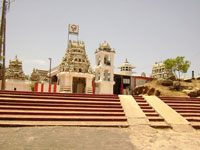
Trincomalee
Trincomalee (or Trinco), on Sri Lanka's northeast coast, is famed for its stunning natural harbour, which was long coveted by colonial powers. The Portuguese, Dutch, French, and Br…
Trincomalee
Trincomalee (or Trinco), on Sri Lanka's northeast coast, is famed for its stunning natural harbour, which was long coveted by colonial powers. The Portuguese, Dutch, French, and British all held it at various times, and during WWII it served as a key British naval base. Today, it's home to the Sri Lankan Navy and a peaceful beach getaway. Just north of town, the soft white sands of Nilaveli and Uppuveli attract sunseekers and snorkellers alike. Cultural highlights include Fort Frederick, built by the Portuguese; Wellington House; and the sacred Koneswaram Temple at Swami Rock, perched dramatically above the sea.
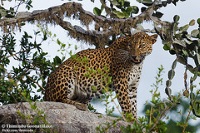
Yala National Park
Yala National Park, Sri Lanka's most visited and second-largest reserve, is famed for its high leopard density and diverse wildlife. Located in the southeast near Tissamaharama, it…
Yala National Park
Yala National Park, Sri Lanka's most visited and second-largest reserve, is famed for its high leopard density and diverse wildlife. Located in the southeast near Tissamaharama, it spans varied habitats, which include open plains, forests, wetlands, and coastline. Elephants, sloth bears, crocodiles, monkeys, and over 215 bird species call it home. The park also shelters ancient ruins such as Magul Maha Vihara. Safari tours, usually in 4x4 vehicles, are the best way to explore, with guides included in the entry fee. The dry season (February to June) offers the best wildlife viewing, though early booking is advised due to the park's popularity.
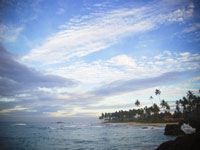
Galle
Galle, on Sri Lanka's southwest coast, is a historic port town best known for its 36-hectare Dutch Fort, originally built by the Portuguese in 1588 and later expanded by the Dutch.…
Galle
Galle, on Sri Lanka's southwest coast, is a historic port town best known for its 36-hectare Dutch Fort, originally built by the Portuguese in 1588 and later expanded by the Dutch. Now a UNESCO World Heritage Site, the fort encloses a charming old quarter filled with colonial-era buildings, churches, museums, and boutique hotels. Galle has become a hub for artists and writers, with galleries, shops, and cafes lining its cobbled streets. While the town has a small beach, better options lie just outside along the coast. Galle blends rich colonial heritage with a vibrant, creative atmosphere, making it a favourite stop.
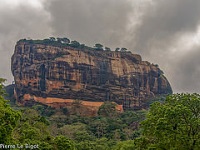
Sigiriya
Sigiriya, or 'Lion's Rock', is a 5th-century citadel built atop a 200-meter granite monolith by King Kashyapa I, who reigned from 477 to 495 CE. After seizing the throne from his f…
Sigiriya
Sigiriya, or 'Lion's Rock', is a 5th-century citadel built atop a 200-meter granite monolith by King Kashyapa I, who reigned from 477 to 495 CE. After seizing the throne from his father, Kashyapa constructed this fortress to protect against his brother Moggallana. The ascent to the summit begins through the remains of a colossal lion's paws, leading to the royal palace. The site features elaborate water gardens, frescoes of celestial maidens, and a mirror wall adorned with ancient graffiti. Designated a UNESCO World Heritage site in 1982, Sigiriya is renowned for its advanced urban planning and architectural ingenuity.
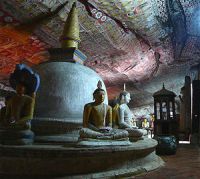
Dambulla Cave Temples
The Golden Temple of Dambulla, a UNESCO World Heritage Site since 1991, is Sri Lanka's largest and best-preserved cave temple complex. Dating back to the 1st century BCE, it compri…
Dambulla Cave Temples
The Golden Temple of Dambulla, a UNESCO World Heritage Site since 1991, is Sri Lanka's largest and best-preserved cave temple complex. Dating back to the 1st century BCE, it comprises five caves adorned with over 150 Buddha statues and 2,100 square metres of vibrant murals depicting the Buddha's life and Jataka tales. The largest cave, Maharaja Viharaya, features a 15-metre reclining Buddha and images of Hindu deities such as Vishnu and Saman. The climb to the temple involves ascending several hundred steps; visitors should be prepared for the heat and wear appropriate footwear.
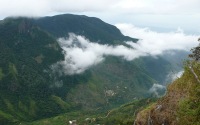
Horton Plains National Park and World's End
Located in the central highlands of Sri Lanka, Horton Plains National Park contains some of Sri Lanka's highest mountains, covered in thick forest, misty lakes, and hidden waterfal…
Horton Plains National Park and World's End
Located in the central highlands of Sri Lanka, Horton Plains National Park contains some of Sri Lanka's highest mountains, covered in thick forest, misty lakes, and hidden waterfalls. The park is one of the only parks in Sri Lanka that allows guests to hike on their own on designated trails. The park is home to many animals, including Samabr Deer, wild boar, otter, leopard, macaques and many species of bird, and exploring the trails is very rewarding. The most popular tourist attraction in Horton Plains National Park is World's End, a sheer precipice with a 2,850-foot (870m) drop at the southern boundary of the park. From the top of the cliff, visitors have a spectacular view of the surrounding hills which extends as far as the Indian Ocean, dozens of miles away, on clear days. The hike to World's End is 6.2 miles (10km) and takes roughly three hours. Visitors should note that from 9am to 10am there is usually a thick blanket of mist over the valleys that totally obscures the view from the cliff, and the best time to see World's End is early in the morning. The path can be crowded on weekends, when large groups of tourists tend to scare away any wildlife in the area.


